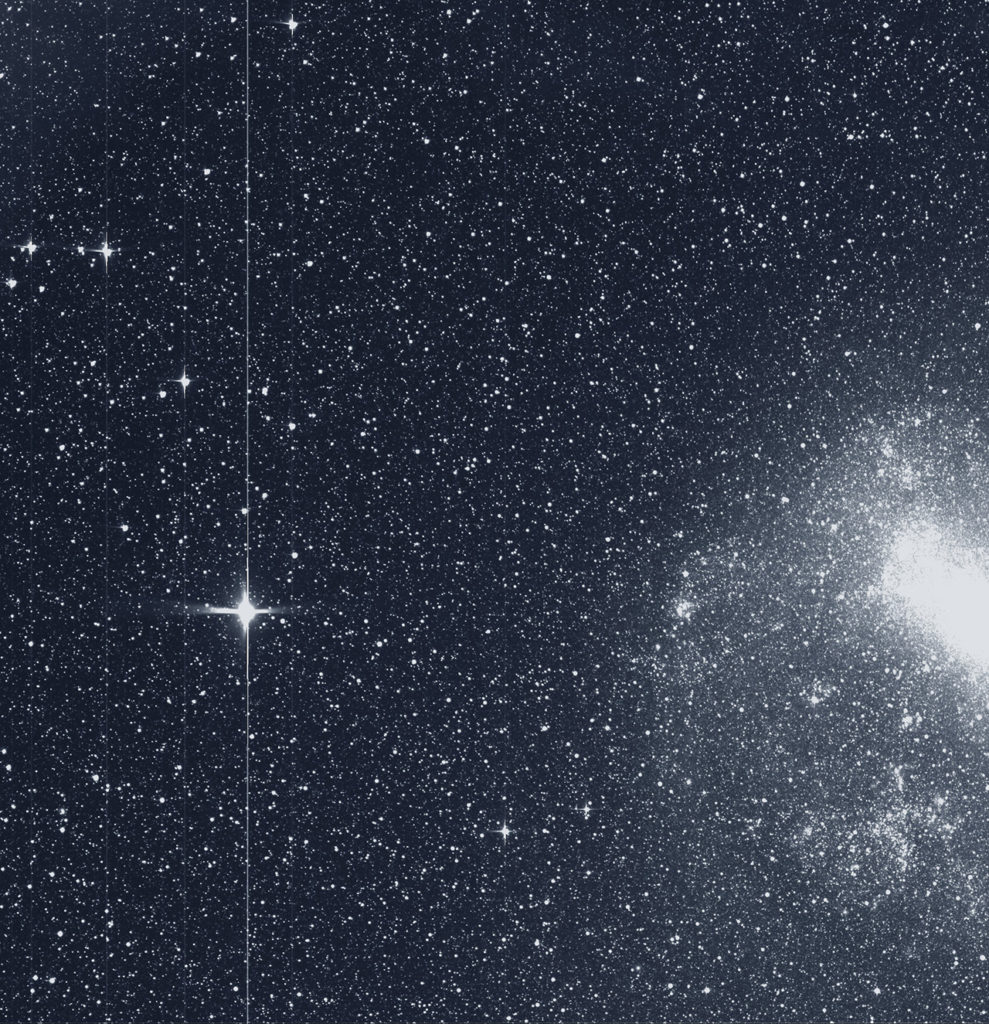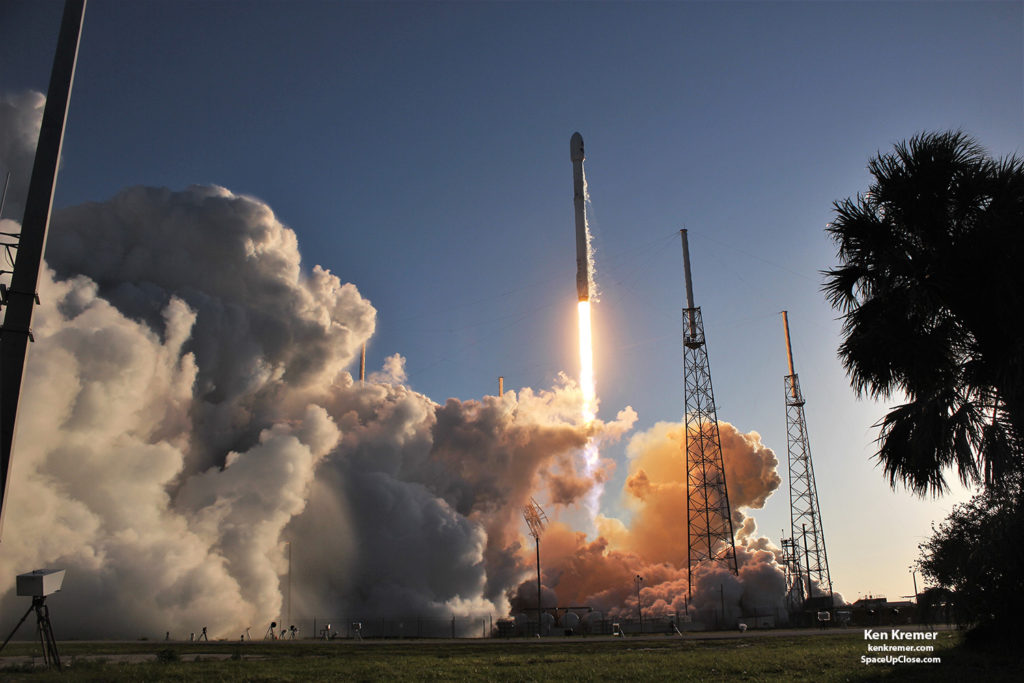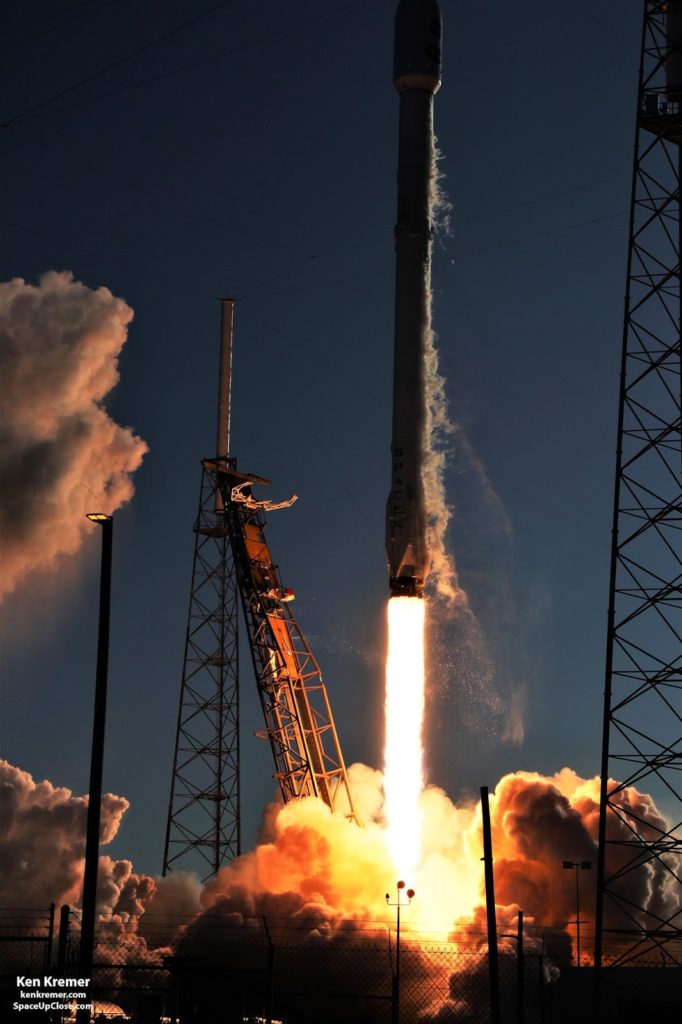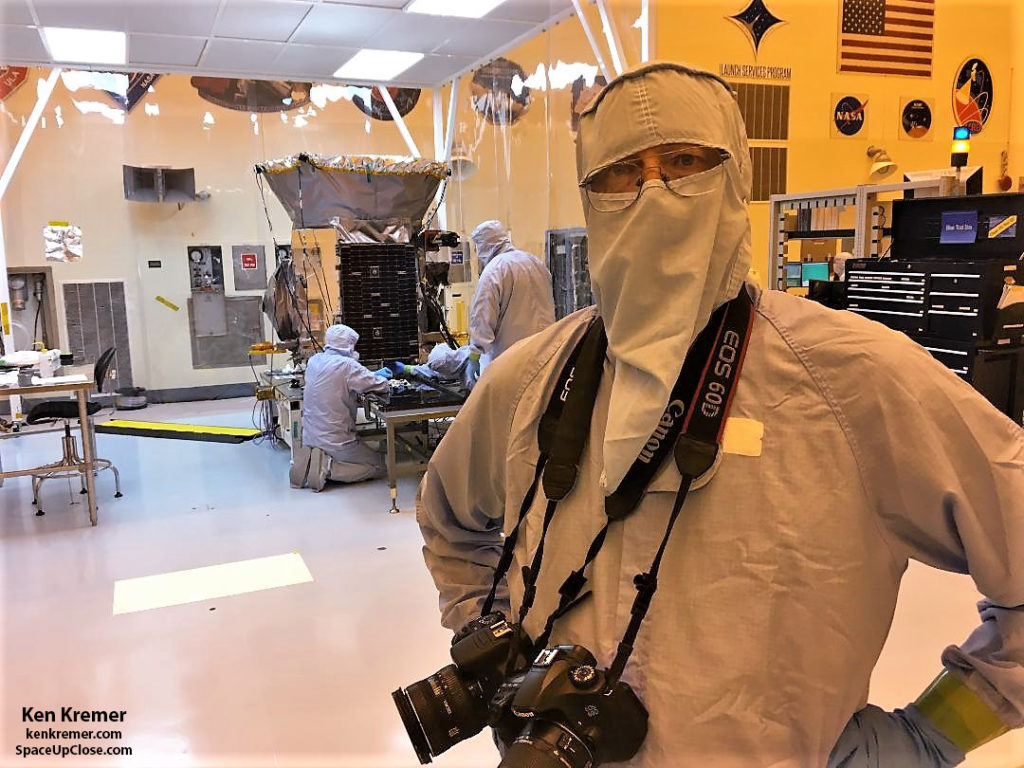— SpaceUpClose.com — 18 September 2018
CAPE CANAVERAL, FL – NASA’s recently launched Transiting Exoplanet Survey Satellite (TESS)
exoplant hunter has transmitted its capturing a wealth of stars that now starts
the search aimed at discovering hordes of planets beyond our solar system –
some of which will surely be conducive to life.
TESS is charged with searching for
and discovering new Earth and Super Earth sized planets beyond our Solar System
that orbit their host stars inside the habitable zones that offer conditions
conducive to the origin and evolution of life.
TESS acquired the “first light” science images using all four cameras
during a 30-minute period on Tuesday, Aug. 7, 2018 – as shown above and below.
capabilities of TESS’ cameras, and shows that the mission will realize its incredible
potential in our search for another Earth” said Paul Hertz, astrophysics
division director at NASA Headquarters in Washington, in a statement.
Some exoplanets have already been discovered by
previously searches of systems included in this “first light” swath of the sky.
“This swath of the sky’s southern hemisphere
includes more than a dozen stars we know have transiting planets based on
previous studies from ground observatories,” said George Ricker, TESS principal
investigator at the Massachusetts
Institute of Technology’s (MIT) Kavli Institute for Astrophysics and Space
Research in Cambridge.
One can expect that brand new exoplanet discoveries
are sure to be announced by the science team soon.
“In a sea of stars brimming with new worlds,
TESS is casting a wide net and will haul in a bounty of promising planets for
further study,” says Hertz.
Thus begins an initial 2-year long
mission during which TESS will gradually sweep across the entire sky and
conduct a full sky survey by monitoring and investigating over 200,000 of the
nearest and brightest stars to search for planets
outside our solar system.
The full sky survey from TESS’ initial science orbit
begins with detailed image and data gathering in the southern sky – as all four
of the spacecraft’s wide-field cameras work in
tandem and gradually sweep across a full 360 degree panoramic view.
The lead image above was captured with just
a single detector of one of its cameras on Tuesday, Aug. 7. It shows the Large
Magellanic Cloud (right) and the bright star R Doradus (left). The star is so bright it saturated an entire
column of pixels in the detector “creating long spikes of light.”
The full four camera image taken on Aug. 7 is shown
below and annotated to identify certain stars and galaxies.
between the camera detectors – because they do not overlay.
Portions of more than a dozen constellations were
captured in these “first light” science images, “from Capricornus to Pictor,
and both the Large and Small Magellanic Clouds, the galaxies nearest to our own,”
according to the team.
“The small bright dot above the Small Magellanic
Cloud is a globular cluster — a spherical collection of hundreds of thousands
of stars — called NGC 104, also known as 47 Tucanae because of its location in
the southern constellation Tucana, the Toucan. Two stars, Beta Gruis and R
Doradus, are so bright they saturate an entire column of pixels on the
detectors of TESS’s second and fourth cameras, creating long spikes of light.”
Video Caption: This animation shows how
the Transiting Exoplanet Survey Satellite (TESS) will study 85 percent of the
sky in 26 sectors. The spacecraft will observe the 13 sectors that make up the
southern sky in the first year and the 13 sectors of the northern sky in the
second year. Credits: NASA’s Goddard Space Flight Center
NASA’s groundbreaking
TESS exoplanet hunting mission began science gathering
after reaching its final orbit and completing the spacecraft commissioning
phase about two months ago in late July 2018.
“All
hardware is fabulous” and its quartet of “cameras are working great” said
spacecraft builder Northrop Grumman’s Robert Lockwood in an exclusive interview
with Space UpClose.
And
to top it all off, TESS science ops should be long lived because the ship is fuel
rich ! with
“multiple decades of fuel remaining,” Lockwood told Space UpClose in an interview in July.
But before it could
start its planet hunting science TESS first had to reach its desired final P/2 resonant science orbit – and the MIT/Northrop Grumman team completed a thorough test and
check out of all spacecraft systems, subsystems and instruments.
TESS
arrived at the P/2 resonant science orbit, which is stable and highly
elliptical, after
completing a lunar gravity assist flyby in mid-May and its final thruster
firing maneuver at the end of May.
“Post launch we did all the check-out operations, did three
orbit raisings and then a fly-by of the Moon on May 17 –
which was super exciting!” Northrop Grumman (formerly Orbital
ATK) TESS program manager Robert Lockwood told SpaceUpClose.com in an exclusive
interview. Lockwood is based
at the TESS mission operations center at Northrop
Grumman’s (Orbital
ATK) facility in Dulles, VA.
“Then we did the final period-adjust maneuver (PAM) on May
30. It lasted 923 seconds and was our largest maneuver.”
“We checked out all the instruments and completed the
entire commissioning procedure of some 152 steps. All the cameras are healthy!
“We entered our first science orbit on July 25.”
“The
TESS spacecraft is healthy!” Lockwood told me. “And all the hardware is
fabulous.”
“The power and thermal margins are good. It’s been a real
pleasure to work with NASA’s Deep Space Network (DSN) [ to get all the data
back].”
“All systems are really GO!”
How are the 4 wide field cameras operating that will detect
the exoplanets?
“The cameras are great!”
“Everything that the science team wanted has been running
really well with the four cameras,” Lockwood replied.
The principal goal
of TESS is to carry out an all sky survey using its four wide-field cameras to
detect and discover dozens of new Earth and Super Earth sized exoplanets beyond
our Solar System around nearby bright host stars in
the solar neighborhood that may be capable of supporting life, and
possibly answer one of humanities most profound questions – “Are We Alone?”
After
finding the new planets, scientists will conduct follow-up observations with telescopes
on Earth and in space like NASA’s James Webb Space Telescope to confirm their
nature and characterize their composition and atmospheres.
The $337 million spacecraft was
built by prime contractor Orbital ATK – now Northrop Grumman.
The kitchen table sized probe weighs
770 pounds (350 kg) and measures 12 x 4 x 5 ft (3.7 x 1.2 x 1.5 m).
P/2 is the name of the TESS mission’s final science orbit.
TESS is NASA’s second exoplanet
mission and a follow up to the hugely successful Kepler probe which discovered
over 2300 exoplanets of all sizes.
The Transiting Exoplanet
Survey Satellite (TESS) successfully blasted off on a two stage SpaceX Falcon 9
rocket at 6:51 p.m. EDT, April 18, from seaside Space Launch Complex-40 on Cape
Canaveral Air Force Station, Florida.
Prior to launch I
visited TESS in the clean room processing facility for an up close look and
media briefing about the small sized but scientifically powerful observatory
during a visit with the spacecraft and team inside the Payload Hazardous Servicing Facility
clean room at NASA’s Kennedy Space Center.
of up close clean room, prelaunch and launch photos here and earlier.
TESS is a NASA Astrophysics
Explorer mission led and operated by MIT and managed by Goddard.
George Ricker, of MIT’s Kavli Institute for Astrophysics and Space Research,
serves as principal investigator for the mission. TESS’s four wide-field
cameras were developed by MIT’s Lincoln Laboratory. Additional partners include
Orbital ATK, NASA’s Ames Research Center, the Harvard-Smithsonian Center for
Astrophysics, and the Space Telescope Science Institute. More than a dozen
universities, research institutes and observatories worldwide are participants in the
mission.
SpaceX, ULA, Boeing, Lockheed Martin, Orbital ATK and more space and mission
reports direct from the Kennedy Space Center and Cape Canaveral Air Force
Station, Florida.
Earth and Planetary science and human spaceflight news: www.kenkremer.com –www.spaceupclose.com –
twitter @ken_kremer – ken
at kenkremer.com
KSC area.
Ken’s photos are for sale and he is available for lectures and outreach events








